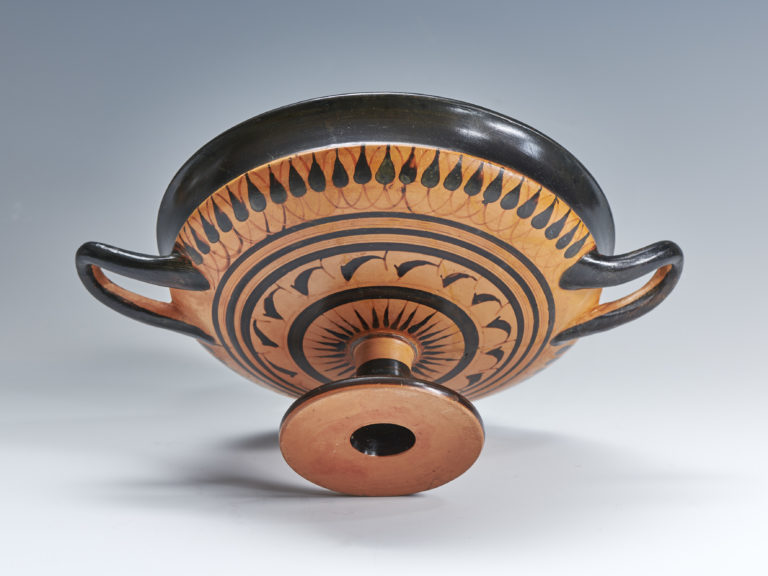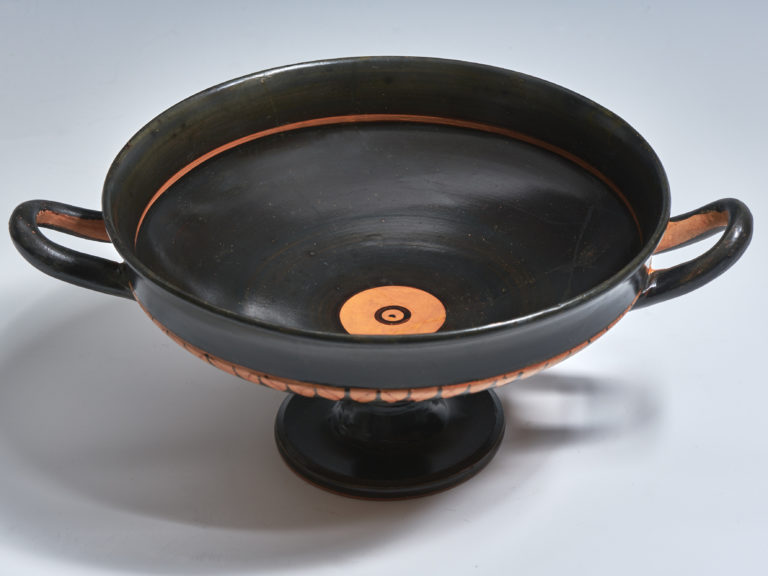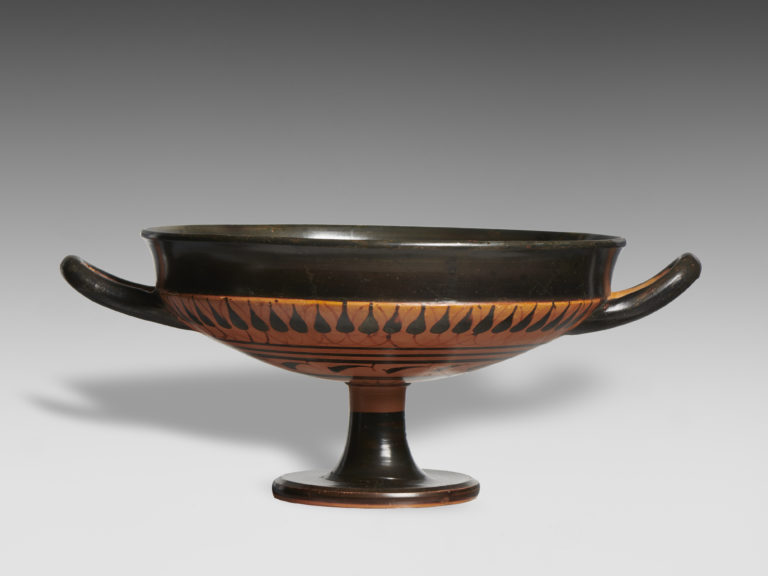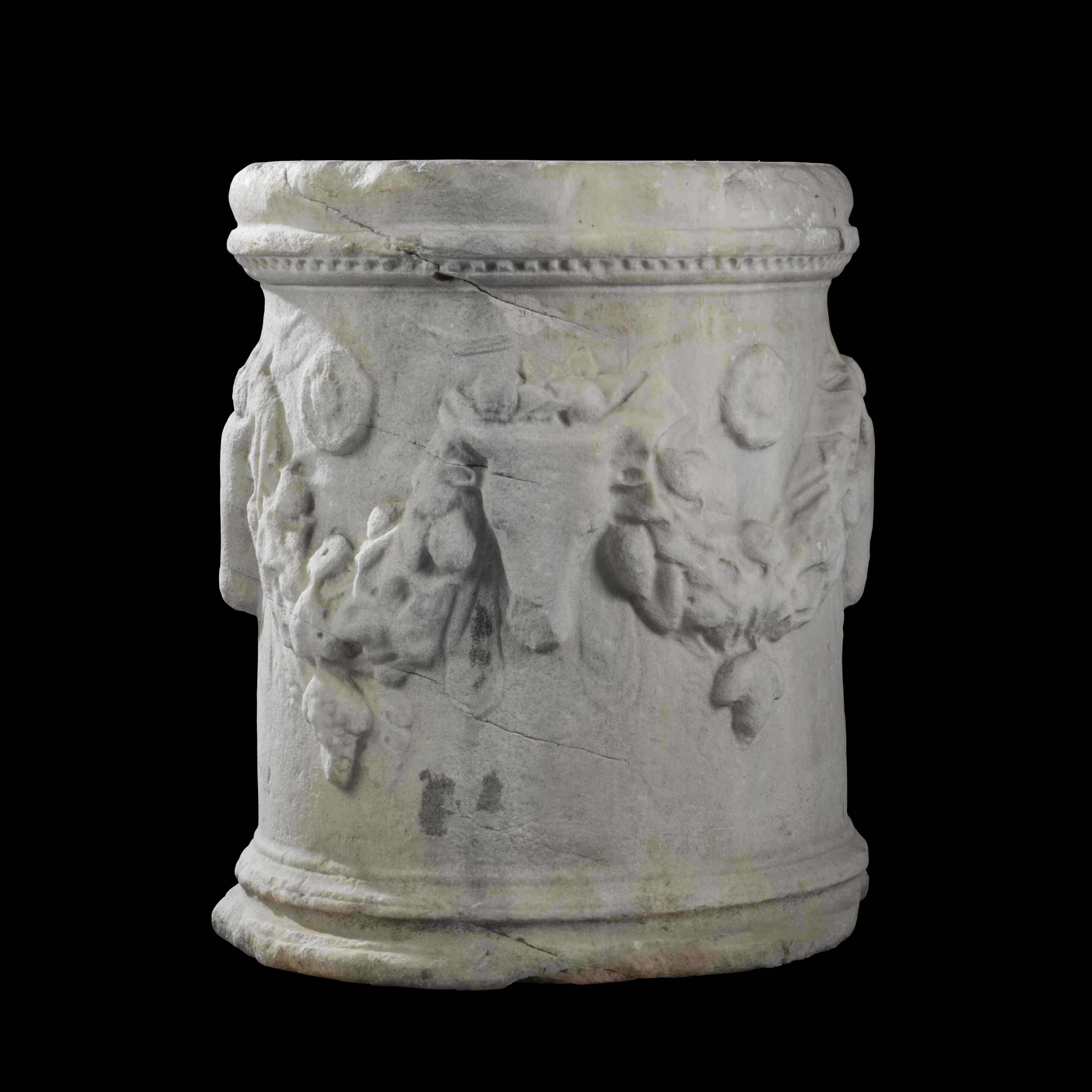Attic black-figure Droop-cup
(23 cm w/o handles)
H.A.C., Kunstwerke der Antike, Auktion 1, 15 June 1998, lot 33
John Percival Droop
The dates of the vases called 'Cyrenaic', in: Journal of Hellenic Studies 30, 1910, p. 1-34
John Percival Droop
Droop Cups and the Dating of Laconian Pottery, in: Journal of Hellenic Studies 52, 1932, p. 303-304
Percy N. Ure,
Droop Cups, in: Journal of Hellenic Studies 52, 1932, p. 55-71; Percy N. Ure, Droop Cups, Black and Figured, in: Studies presented to David M. Robinson II, 1953, p. 45ss.; B. Fellmann, Corpus Vasorum Antiquorum. Deutschland Bd.56. München, Antikensammlungen ehemals Museum antiker Kleinkunst, Bd. 10, München 1988, 60 ff.
With a hollow stemmed foot and off-set lip, decorated with a frieze of lotus bud-palmette chain, a secondary frieze of inverted silhouette dolphins below, rays above the stem, all separated by black bands framed by thin bands of diluted glaze, the interior with a reserved band below the rim, the reserved tondo centered by a dotted circle
Note
Droop cups are named after the english archaeologist, John Percival Droop, who first pubished this genre in 1910 in his articel "The dates of the vases called 'Cyrenaic'" in JHS 30. They are charectarised by a concave lip, a high stemmed foot with the upper part reserved, a thin reserved band inside the bowl at the lower lip and a small reserved tondo with a central dot and a circle or two in the center of the bowl. This cup belongs to Ure's group I B, cf. Ure, Droop Cups, Black and Figured, in: Studies presented to David M. Robinson II, 1953, 45-54. But in his list there is no specimen with a dolphin frieze









